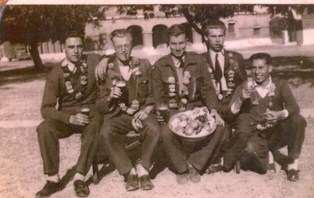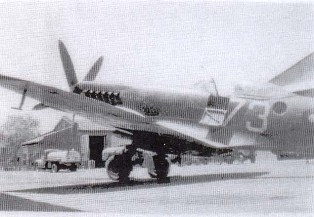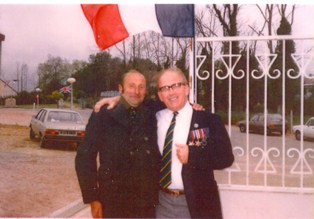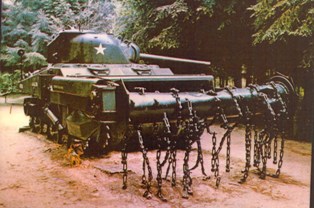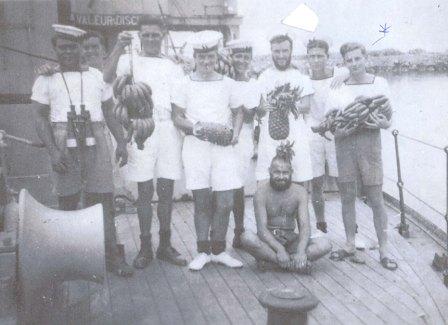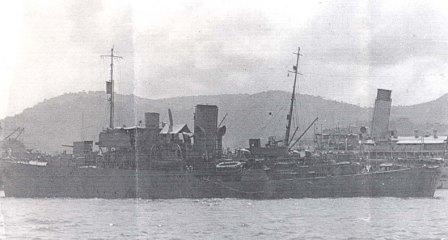
Private 20704 Ernest Claridge
8th Bedfordshire Regiment
Killed in action 15th September 1916
Son of Elizabeth Claridge, of 70, Queen St., Hemel Hempstead, Herts, and the late Charles Claridge.
Thiepval Memorial, Pier and Face 2 C.
Born: Hemel Hempstead
Enlisted: Bedford
Residence: Hemel Hempstead
Private 16361 Henry/Harry Gamble
8th Bedfordshire Regiment
Killed in Action 15th September 1916
Guillemont Road Cemetery, Guillemont, VII. E. 2.
Born: Boxmoor
Residence: Boxmoor
Enlisted: Watford
Private 20744 Arthur Janes
8th Bedfordshire Regiment
Killed in Action 15th September 1916
Thiepval Memorial, Pier and Face 2 C
Born: Edlesborough, Dunstable
Residence: Hemel Hempstead
Enlisted: Bedford
Private 22080 Frederick Taylor
8th Bedfordshire Regiment
Killed in Action 15th September 1916
Husband of Kate Taylor, of 7, St. John's Rd., Boxmoor, Herts.
Thiepval Memorial, Pier and Face 2 C.
Born: Hemel Hempstead
Enlisted: Watford
Residence: Hemel Hempstead
Claridge's name on the Thiepval Memorial
(Photo: Richard Grayson, 27th March 2012.)
Janes' name on the Thiepval Memorial
(Photo: Richard Grayson, 27th March 2018.)
Taylor's name on the Thiepval Memorial
(Photo: Richard Grayson, 27th March 2012.)
Soldiers Claridge, Gamble, Janes and Taylor were regrettably killed in action whilst on operations in northern France on 15th September 1916. All of these men were members of the 8th Bedfordshire Regiment and all shared the rank of private.
The 8th Bedfordshires were formed specifically for the war following Lord Kitchener’s third call to arms (K3). The battalion was trained in Surrey with a small period of time spent in Brighton. Late in August 1915 the battalion travelled to Dover and arrived in Boulogne on 30th August 1915. The 8th Bedfordshires were eventually disbanded following a reorganisation of the British army on 16th February 1918. The 8th Bedfordshires served in the 16th brigade along with the 1st Buffs, 1st Kings Shropshire Light Infantry and the 2nd Yorks and Lancaster Regiment. All were a part of the British 4th army.
The battalion fought valiantly in the Battle of Loos (Sept 1915), the Battle of Flers-Courcelette and Battle of Morval at the Somme in September 1916 in addition to the Battle of Le Transloy in October of the same year. Additionally, the regiment were also the victims of the first Phosgene gas attack by the German army, losing hundreds of men. Before their disbandment the 8TH Bedfordshire’s also served in the Battle of Hill 70 and the Cambrai Operations in 1917. In service 670 officers and men gave their lives for king and country.
Privates Claridge, Gamble, Janes and Taylor all lost their lives during the opening day of the Battle of Flers-Courcelette on 15th September 1916. The battle was concluded with an allied victory just 7 days later on September 22nd. The offensive was a collaborative operation between the British 4th army, British reserve army and the French 6th army. The objective was to take a heavily fortified position known as the ‘Quadrilateral’ which was held by the German 1st army. Following initial failure and large casualties the quadrilateral was taken on September 18th 1916 with the British army advancing 2300m with the battle concluding on 22nd September. The huge tactical success lead to the battle of Morval to begin on September 25th after weather and supply delays.
On September 15th, the Battle of Flers-Courcelette began. Zero hour was set to 6:20am with the battalion being in position from 4:30AM. The 8th Bedfordshires were to be supported by the heavy section of the machine gun corps and tanks. At 6am a slow artillery barrage began on the Morval Les-Boeufs, by 6:20AM this was an intense artillery barrage. Regrettably this intense barrage caused many casualties as several men from the regiment were in shell holes, in no man’s land prepared for the attack. The 8th Bedfordshires and 1st Buffs advanced towards the Quadrilateral, reinforcements from 2nd Yorks and Lancaster Regiment also came to assist once the offensive had begun. The tanks due to support the assault never arrived to assist due to one having mechanical problems and being inoperable early that morning and the remainder losing their way whilst enroute. Additionally, the Quadrilateral had not been shelled previous to the attack, a combination of these factors resulted in the initial assault being a failure for the allied forces. The 8th Bedfordshires were relived at 6pm that evening by the 2nd Yorks and Lancaster Regiment and put into reserve in trenches due south-east of Guillemont. Following shelling of the quadrilateral it was eventually taken on 18th September 1916 by allied forces.
From available information, it can be concluded Privates Ernest Claridge, Henry/ Harry Gamble, Arthur Janes and Fredrick Taylor were most likely killed by gunfire, artillery fire or grenades during the initial assault of the Quadrilateral. It is also possible that some of the privates may have died in shell holes as a result of friendly fire.
Sources:
- 8th Bedfordshire Regiment War Diary, catalogue reference WO 95/1611.
By Sam Capron, Alex Taylor and Matthew Beeton
27th June 2017
